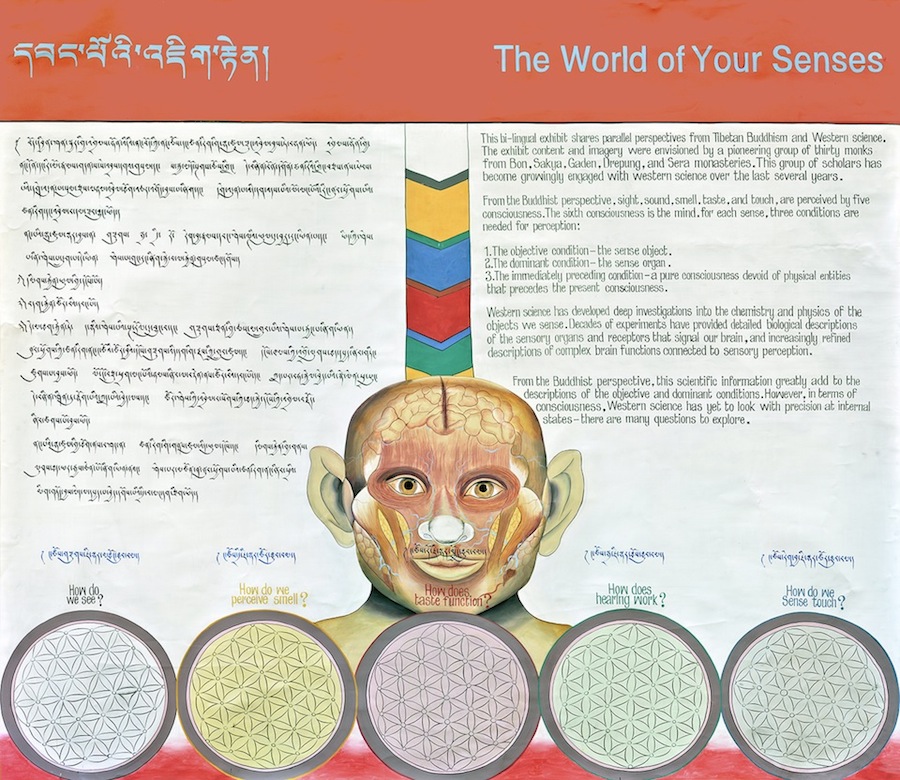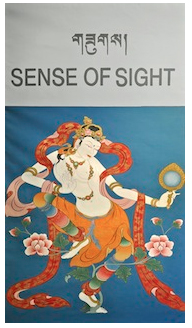
The bi-lingual exhibit shares parallel perspectives from Tibetan Buddhism and Western science. The exhibit content and imagery were envisioned by a pioneering group of thirty monks from Bon, Sakya, Gaden, Drepung, and Sera monasteries. This group of scholars has become growingly engaged with Western science over the last several years.
From the Buddhist perspective, sight, sound, smell, taste, and touch are perceived by five consciousness. The sixth consciousness is the mind. For each sense, three conditions are needed for perception:
- 1. The objective condition – the sense object.
- 2. The dominant condition – the sense organ.
- 3. The immediately preceding condition – a pure consciousness devoid of physical entities that precedes the present consciousness.
Western Science has developed deep investigations into the chemistry and physics of the objects we sense. Decades of experiments have provided detailed biological descriptions of the sensory organs and receptors that signal our brain, and increasingly refined descriptions of complex brain functions connected to sensory perception.
From the Buddhist perspective, this scientific information greatly adds to the descriptions of the objectivew and dominant conditions. However, in terms of consciousness, Western science has yet to look with precision at internal states – there are many questions to explore.





